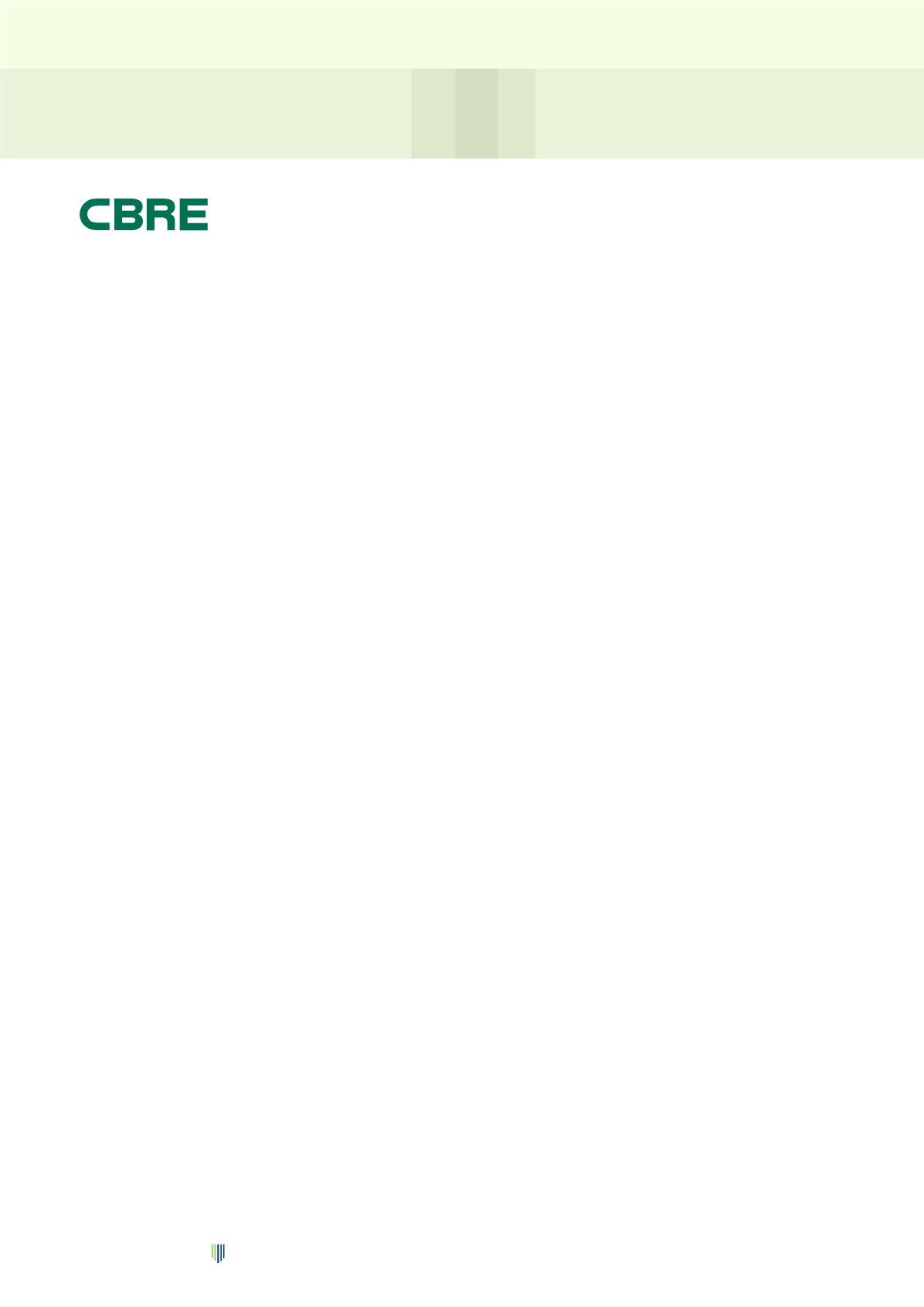
24
CDL
HOSPITALITY TRUSTS
MARKET REVIEW
Maldives
Hotel Property Sector as of 1 March 2015
MALDIVES TOURISM MARKET
The tourism sector is the largest contributor to the country’s GDP,
accounting for approximately 30% over the past decade or so. In
2014, visitor arrivals to Maldives grew 7.1% to 1.2 million.
Tourist arrivals have been rising strongly, especially in the
past few years. According to MMA, the increase in tourist
arrivals was mainly driven by higher demand from Chinese
tourists. China has been the top source market by country to
Maldives since 2010. It has grown from about 119,000 arrivals
in 2010 to reach about 363,626 arrivals in 2014. However,
the continuance of economic issues in Europe was the main
factor for the slowdown in visitor arrivals growth. For 2014,
European tourists account for approximately 529,291 arrivals
(an increment of 0.4% from 2013) while Asia Pacific tourists
account for approximately 588,845 arrivals (12% increment), with
the remaining travellers coming from the Americas and Middle
East regions.
EXISTING SUPPLY
According to the Maldives Monetary Authority, the total number
of beds in the Maldives increased by an average of 3.9% per year
over the period of 2000 to 2014. An increase in the number of
beds was an outcome of improved economic situation which
resulted in many projects being completed. In 2014, the number
of beds amounted to 26,891 which is about 2.8%more than 2013.
HOTEL MARKET PERFORMANCE
In tandem with higher visitor numbers and changes in the
length of stay, the numbers of bed nights sold increased in all
years except for 2005 and 2009. However demand weakened in
2012 and the number of bed nights sold declined by 1.2% as
compared to 2011. Nevertheless, the market saw a recovery in
2013, with number of bed nights sold increasing by 9.1% over
2012. This was mainly due to strong visitor arrivals recorded
during the year. Signs of recovery still exist as the number of beds
sold for 2014 increased by 3.6% over the same period in 2013.
The bulk of the Maldives resort properties are in the upper
upscale or luxury segments. This has occurred for several
reasons including the nature of the locations – pristine, remote,
small, islands – which have been expensive to access, construct
and service. In addition the fixed tax per bed meant that it
was preferable to develop fewer beds but of a high quality.
In particular the market historically catered for the top end
European markets where smaller, exclusive, resorts were in
good demand.
There has been a gradual change in the demand segments.
Travel has become cheaper and accessibility has improved. There
is a growing middle class in Asia (in particular in China) while the
European demand has suffered since the global financial crisis.
There has been a change in the rental structure from a rate per
bed to a rate per square metre of the island. The latter point will
tend to encourage a more intensive level of development than
previously.
The result of the above is that there has been an increased
demand for mid tier properties and we expect this to be
maintained. There are few resorts competing in this market,
most are locally owned and operated. Obtaining operating
performance details on these is difficult but it appears that they
have good occupancy levels if correctly marketed as they attract
more demand in the low season than the luxury resorts.
According to STR Global, occupancy rates for luxury properties
rebounded from 2010 onwards after a fall in 2009. The negative
sentiment towards luxury, or discretionary spending, during the
economic crisis has ended enabling rooms to increase strongly.
From2010onwards, themarket performancebasedonSTR’sdata
has shown a steady improvement in terms of RevPAR. RevPAR in
2014 reached US$524.2, an increment of 9.2% from 2013. This
was supported by the ADR at US$743.4 while occupancy reached
69.2% in 2014. The CAGR rate for RevPAR for the period from
2010 to 2014 was a solid 12%.
FUTURE SUPPLY
The hotel industry is expected to see at least another 8 new
resorts and over 1,000 rooms expected to enter the market by
2016. Some selected additions to the supply in 2015 include the
Amilla Fushi Resort, Radisson Maldives Hulhumale, The Ocean
Flower, Finolhu, Outrigger Konotta while The Chedi Dhapparu,
Amari Havodda is expected in 2016. In addition there are also a
number of previously announced projects that have been put on
hold until further notice.
HOTEL MARKET OUTLOOK
In order to maintain the competitiveness of Maldives, the
government has introduced plans to diversify the market by
developing new market segments. Today, Maldives is a world-
renowned tourist destination and has become a romantic
destination for honeymooners especially amongst Asian tourists.
Besides attracting newlyweds, concentration has increasingly
been given to attract visitors from other sources. For example,
resorts have started to offer more family packages. Additionally,
resorts have also tapped into the senior market in recent years
given that this group of people would normally have higher
disposable incomes. Other segments like Health &Wellness and
MICE are being targeted as well.
Whilstmostofthefuturesupplyislikelytobeintheluxurysegment,
the focus is gradually changing to be more mid market. There
are many sites that have been approved for development but
few that will proceed. We note that several of the developments
have already been postponed but considerable periods from
the originally announced opening dates. As the global economy
picks up, we expect more developments to occur. However,
finance for development is still virtually non-existent and there is
heavy reliance on equity to fund such works.


